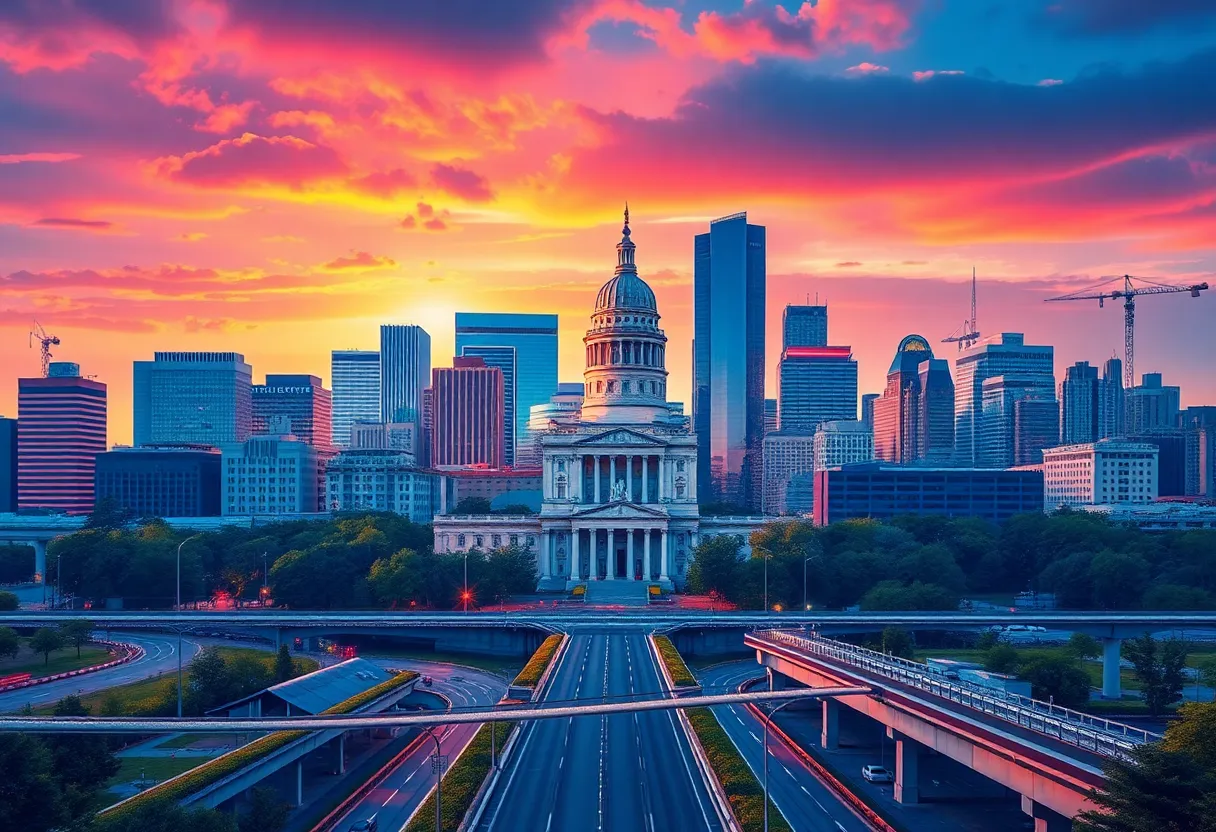News Summary
The Indianapolis City-County Council has approved a historic $1.7 billion budget aimed at enhancing public safety and infrastructure without raising taxes. Despite revenue projections falling, the budget allocates significant funds to law enforcement, fire departments, and infrastructure projects, including gun violence prevention and homelessness initiatives. Controversies regarding transparency and funding allocations have arisen, but the administration emphasizes a commitment to improving residents’ quality of life. Implementation of new fees and structured spending plans will be closely monitored to balance fiscal responsibility with community needs.
Indianapolis—On October 6, 2023, the Indianapolis City-County Council approved a record $1.7 billion budget for 2026. This budget, which passed with a vote of 17-8, aims to maintain the city’s key services without raising taxes, despite facing lowered revenue projections. Mayor Joe Hogsett championed the balanced budget amidst ongoing financial challenges and criticism from both parties.
While the budget received broad support, all six council Republicans and two Democrats opposed it. The opposing Democrats raised issues related to Mayor Hogsett’s handling of sexual harassment allegations and concerns over cooperation with U.S. Immigration and Customs Enforcement (ICE). Within the Republican camp, some members called for increased spending on infrastructure and expressed concern about funding for certain proposed initiatives that lacked demonstrable effectiveness.
Key allocations within the budget highlight the administration’s focus on public safety and infrastructure. Notably, local law enforcement and fire department budgets will not face cost-cutting measures, accounting for more than 40% of the total budget. The Indianapolis Metropolitan Police Department (IMPD) will see a 6% budget increase to $358 million, which represents a 46% increase compared to 2023, despite the department operating with a reduced workforce of fewer than 1,500 officers.
The city will allocate $4.5 million for gun violence prevention initiatives, which have contributed to a reduction in homicides in recent years. Further infrastructure improvements are planned, with the city aiming to secure an additional $50 million in state funding by 2027. The budget anticipates $10 million in new income tax revenue for 2026 to support these efforts.
The Department of Public Works (DPW) will receive a budget of $257 million, which has more than tripled since 2016. Additionally, $10 million has been earmarked to address homelessness and housing stability, with potential costs for the Streets to Home Indy initiative estimated to reach $50 million.
Despite these investments, the budget reflects an approximate reduction of $10-30 million in projected revenues over the next three years, primarily due to changes in state tax reforms. New major fees for building permits and zoning violations are set to be implemented, with some fees anticipated to double or triple compared to past rates.
Critics of the new budget have expressed concern about funding allocated to the Sheriff’s office for housing ICE detainees, which has garnered significant public scrutiny. Furthermore, environmental advocates were disappointed by the absence of funds designated for urban forest preservation, despite previous recommendations to do so.
The budget approval process has not been without its controversies. Accusations of limited public engagement and lack of transparency have been raised, leading to increased tension during discussions leading up to the vote. The Mayor’s office maintains that the budget is a reflection of its ongoing commitment to enhancing public safety, improving infrastructure, reducing violence, and boosting the quality of life for residents.
As Indianapolis moves forward with this budget, the effects of approved spending and the implementation of new fees will be closely monitored by both supporters and critics. The implications for city services and quality of life will be pivotal as the administration seeks to balance fiscal responsibility with the demands of the community.
Deeper Dive: News & Info About This Topic
HERE Resources
Arizona Faces School Closure Crisis Amid Funding Issues
Evanston/Skokie School District 65 Cancels Special Meeting
Hudson School Board to Decide on Elementary School Closures
Evanston School District 65 Considers School Closures
Broward County School District Proposes Major Changes
Vermont Faces Construction Labor Shortages and Rising Costs Amid Ongoing Development Projects
Storm Amy Causes Fatalities and Disruptions in Ireland
AISD Proposes Closure of 13 Schools Amid Budget Deficit
Calls for Reform in West Virginia School Funding
Kyrene School District Revises Closure Plans Amid Community Feedback
Additional Resources
- IndyStar: Biggest Winners and Losers of the Indy 2026 City Budget
- Fox59: Indianapolis City-County Council Approves 2026 Budget
- WTHR: Indy City-County Council Approves $1.7 Billion 2026 Budget
- WISH TV: Indy City Council Approves 2026 Budget
- Wikipedia: Budget

Author: STAFF HERE INDIANAPOLIS WRITER
The INDIANAPOLIS STAFF WRITER represents the experienced team at HEREIndianapolis.com, your go-to source for actionable local news and information in Indianapolis, Marion County, and beyond. Specializing in "news you can use," we cover essential topics like product reviews for personal and business needs, local business directories, politics, real estate trends, neighborhood insights, and state news affecting the area—with deep expertise drawn from years of dedicated reporting and strong community input, including local press releases and business updates. We deliver top reporting on high-value events such as the Indianapolis 500, Indy Jazz Fest, and the Indiana State Fair. Our coverage extends to key organizations like the Indy Chamber and Visit Indy, plus leading businesses in motorsports and healthcare that power the local economy such as Indianapolis Motor Speedway and IU Health. As part of the broader HERE network, we provide comprehensive, credible insights into Indiana's dynamic landscape.





